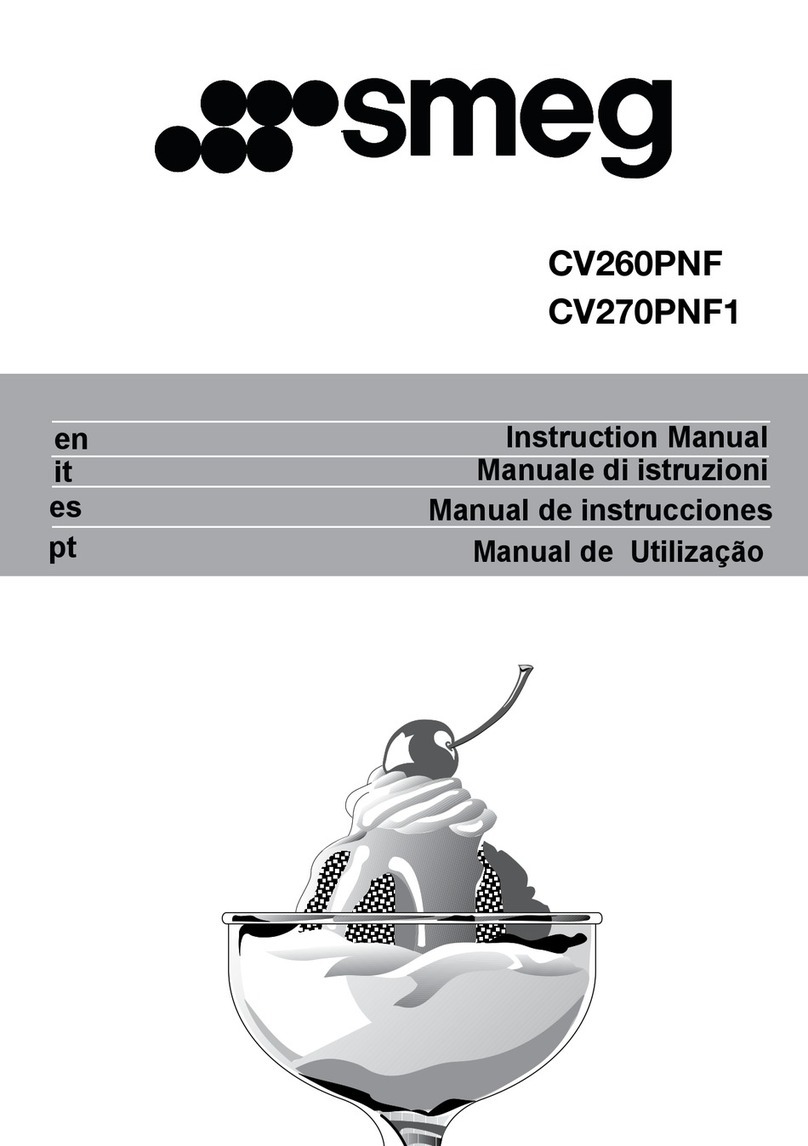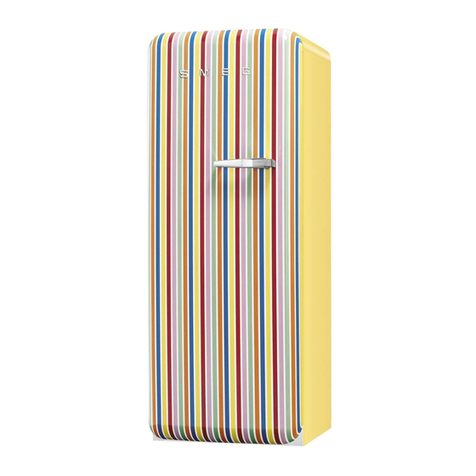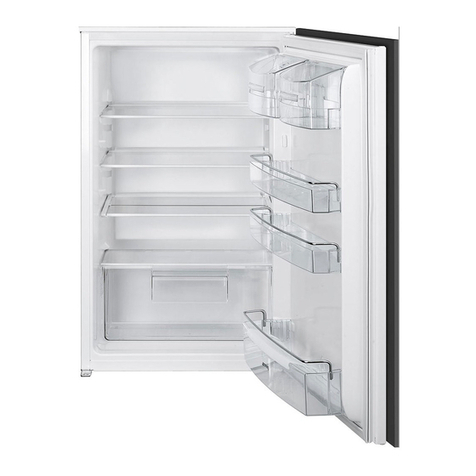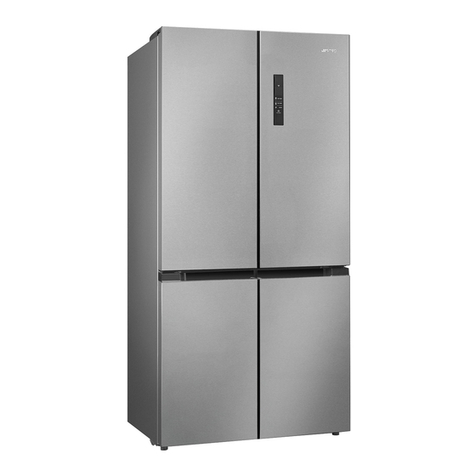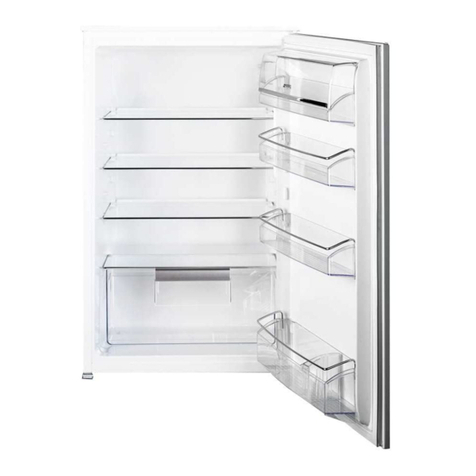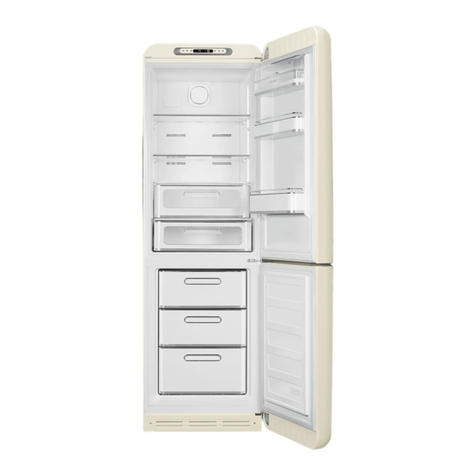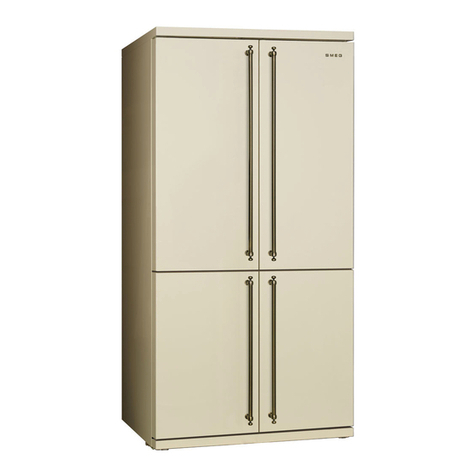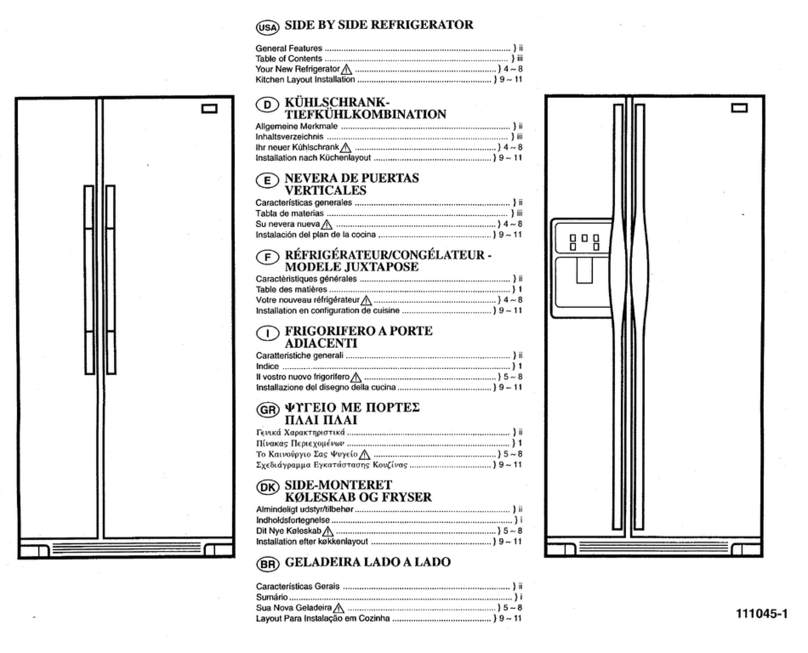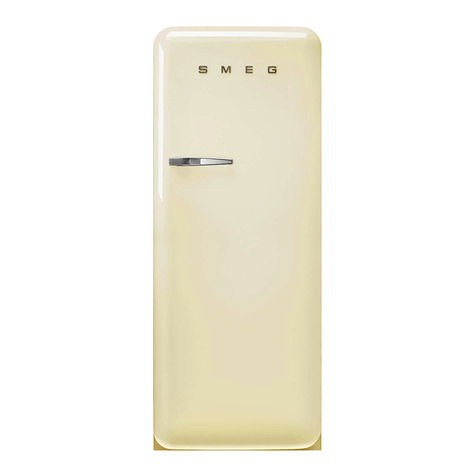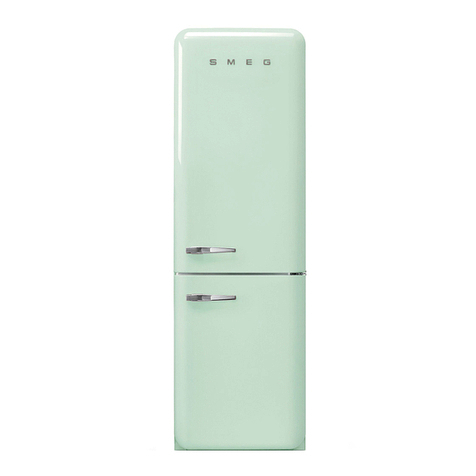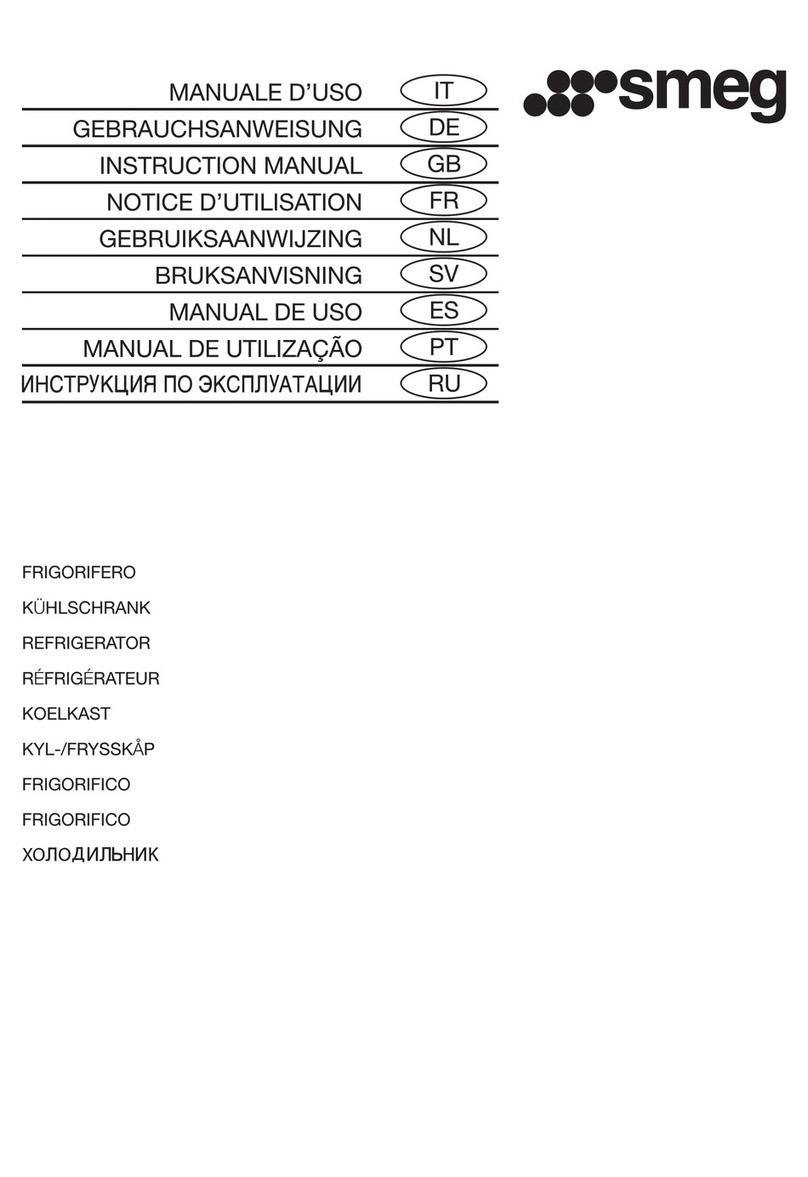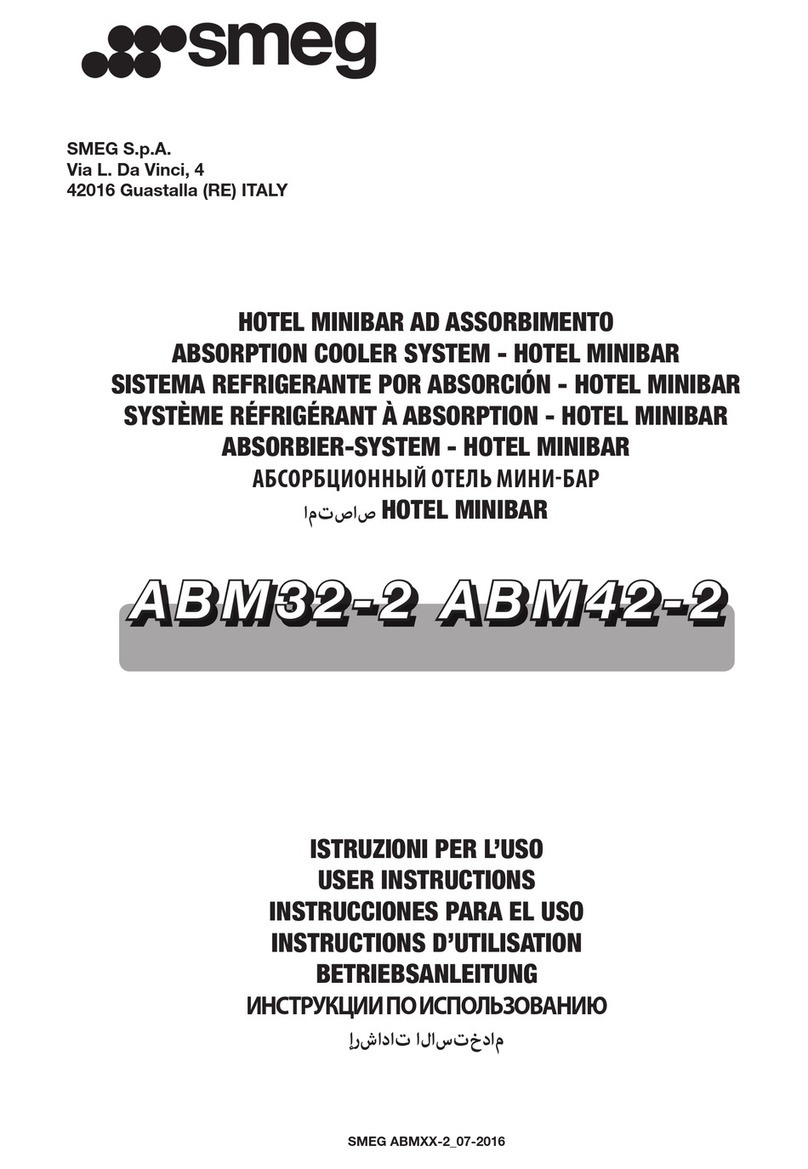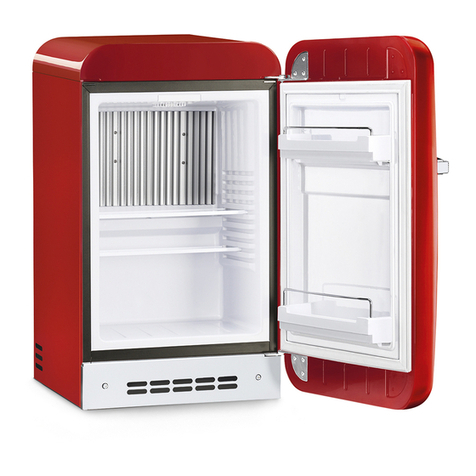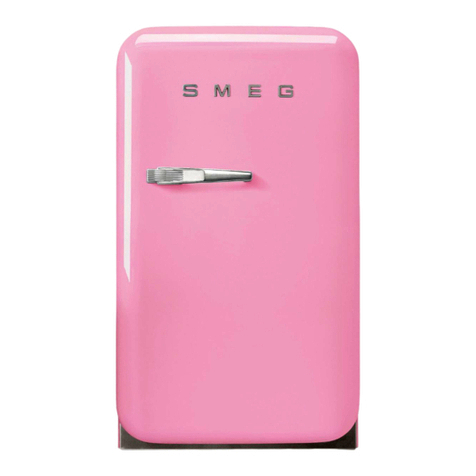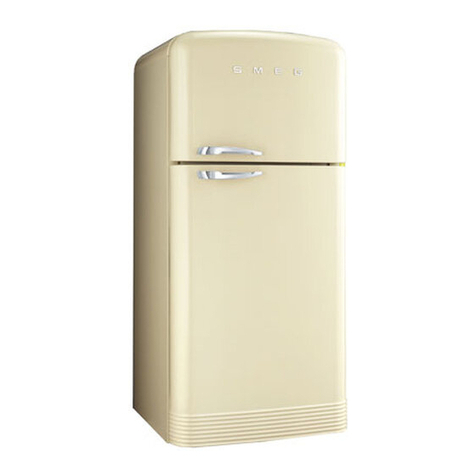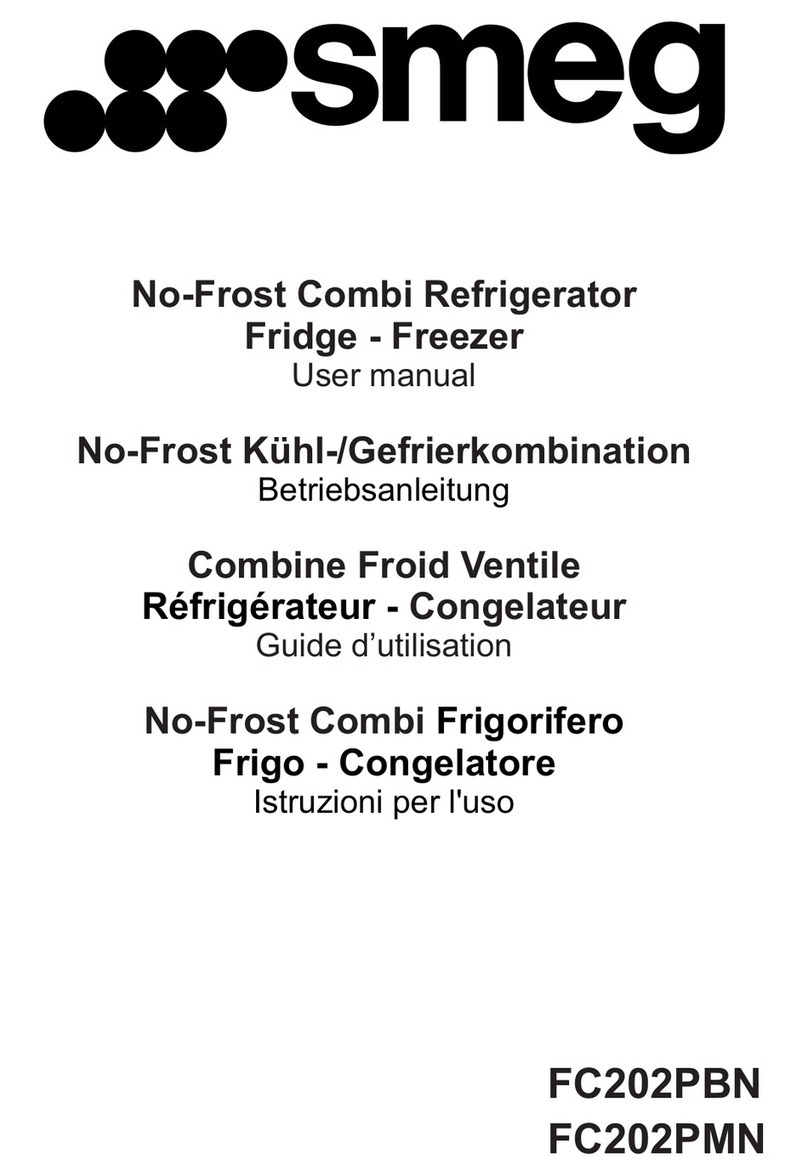Use
18
Frozen foods storage life table
Defrosted foods
Food must be consumed as soon as
possible once defrosted. Freezing foods
preserves them, but it does not destroy any
micro-organisms, which are activated after
thawing, damaging the foods.
Partial defrosting lowers the nutritional value
of the foodstuffs, particularly of fruit,
vegetables and ready meals.
3.8 Noises during operation
The refrigerator and freezer compartments
are cooled by means of a compression
system. In order to maintain the preset
temperature inside the refrigerator and
freezer compartments, the compressor
comes into operation in response to the
level of cooling required, and may operate
continuously if necessary. When the
compressor starts to function, it creates a
buzzing noise which generally diminishes in
intensity after a few minutes.
Another normal operating noise of the
appliance is a gurgling due to the coolant
flowing through the pipes in the circuit. This
noise is normal and does not indicate an
appliance malfunction. If it becomes too
loud, this may mean that there are other
causes. Checks must then be made to
ensure that:
• The refrigerator is properly levelled on
the floor and does not vibrate when the
compressor is in operation: if this is not
the case, adjust the appliance's feet until
it is level;
• The drawers, shelves and trays on the
door are correctly positioned in their
holders: if they are not, put them in
correctly;
• Bottles and containers on the various
shelves are stable and not touching each
other: otherwise, the vibration resulting
from compressor operation could
generate noise;
• Do not place the fridge in such a way
that it is in contact with furniture or other
household appliances.
Foodstuff Time
Fruit, beef max 10-12 months
vegetables, veal, poultry max 8-10 months
Game max 6-8 months
Pork max 4-6 months
Mince max 4 months
Bread, desserts, cooked foods,
oily fish max 3 months
Offal max 2 months
Sausages, lean fish max 1 month
CAUTION
• Do not refreeze frozen foods which
have partly or completely thawed.
